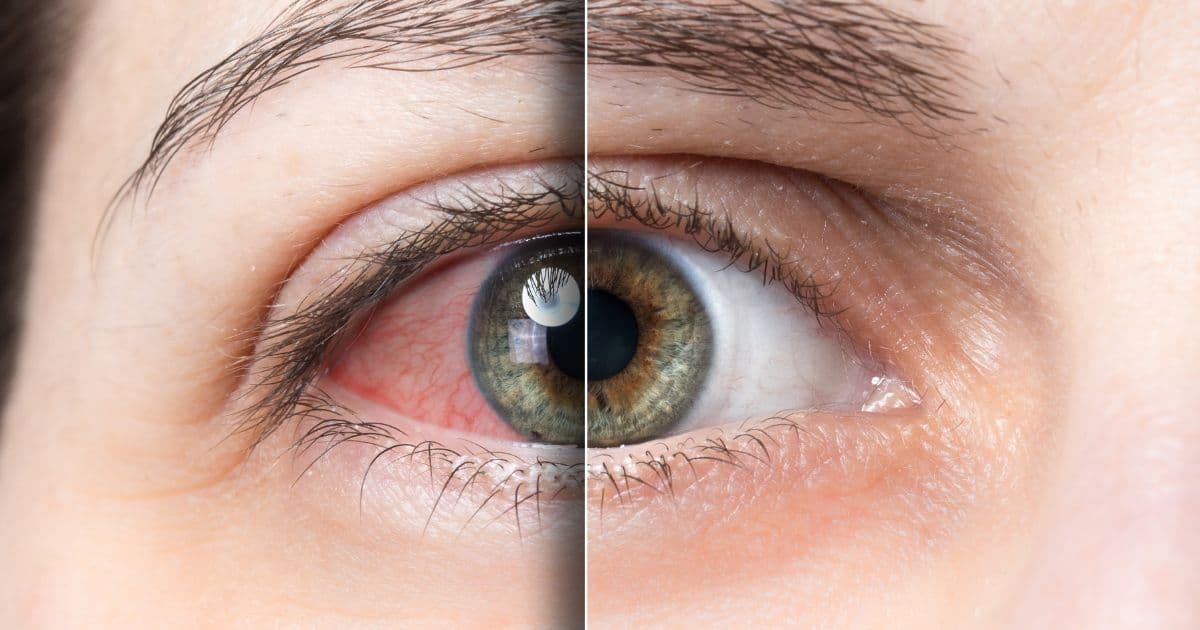Red Eyes

Red Eyes
Have you ever looked in the mirror and saw red eyes staring back at you? It does happen to quite a number of people. Red eyes are also known as bloodshot eye is caused by the dilation of the blood vessels on the surface of the eye (sclera) and it is usually caused either by irritation or infection. Red eyes can occur in one or both eyes and it can either be a sign of mild irritation or can sometimes signal a serious eye condition.
Causes and Symptoms of Red Eyes?
Allergies: Allergies can cause red eyes with outdoor causes including pollen from grasses or trees and indoor causes from dust, smoke, pet dander, perfume. Most people experience eye irritation when exposed to what they are allergic to. Additionally, red eyes can be associated with nasal infection and allergies such as cold and flu. Alternately, red eyes can also be caused due to the lack of sleep which can be easily solved by getting a little more rest.
Dry Eye: When the eye does not produce enough tears or are not of the right consistency enough to nourish and lubricate the eye, this condition is considered as “dry eye syndrome”. When this happens, the eye experiences irritation and sometimes pain besides the eye being red. There are a number of symptoms that accompany dry eye such as: heavy eyelid, blurry vision, eye fatigue, excessive tears, discomfort with contact lenses, the inability to cry, gritty eye, burning sensation etc, and only a doctor can determine the root cause of the dry eye.
Although the Dry eye is incurable, it can be treated. The treatment options include artificial tears, prescription eye drops or surgery depending on the condition of the eye.
Conjunctivitis: This is also known as pinkeye, and it is an infection that occurs when the conjunctiva (the lining inside the eyelid and the white surface) of the eye becomes irritated and inflamed. It can be caused by virus, allergy, bacteria, or irritants such as the chlorine in the swimming pool. It is especially common among children and it is highly contagious. To avoid spreading pink eye, wash your hands frequently and avoid rubbing your eyes, sharing eye drops, towels, and cosmetics.
The symptoms include excessive tears, itchy eye, gritty eyes, burning sensation in the eye, light sensitivity, poor vision, discharge from the eye, sore eyes. Pinkeye is usually treated by prescription medication and doctors.
Subconjunctival hemorrhage:his occurs when the tiny blood vessels break beneath the eye surface and cause blood to leak into the area between the white of the eye and and the conjunctiva (the conjunctiva has many blood vessels and capillaries). The leaked blood is trapped which then makes the white part of the eye look bright red. It can be caused by intense rubbing of the eye, heavy lifting, intense sneeze or even hard vomiting. The symptoms include a patch of red area on the eye beside the general redness and a itchy or scratchy sensation.
The eye usually does not hurt and most subconjunctival hemorrhages are generally harmless and clear up on their own within a few days despite looking serious. No treatment is necessary but in case the eye becomes irritated, then a visit to the doctor is paramount and artificial tears may be recommended.
Glaucoma: Glaucoma is a serious condition of red-eye and it occurs when fluids build up to the front part of the eye and cause pressure which can in turn damage the optic nerve of the eye. It is the leading cause of blindness for people around the age of 60 and above. Glaucoma in its usual form is painless while acute glaucoma symptoms include: severe eye pain, headache, nausea, and vomiting, blurred vision, halos in your vision. Visit the doctor as soon as possible if you notice any of these symptoms.
Prevention of Red Eyes
Avoiding the associated causes of red eyes is a way to prevent its occurrence and here are some tips
- Washing your hands regularly and avoid rubbing your eyes
- Wearing contact lenses for its recommended duration and not longer
- Cleaning your contact lenses with solution regularly (in case of monthly, bi-weekly and annual lenses)
- Avoiding activities that can cause eye strain such as reading for too long in poor lighting, looking at the screen for a long period of time - staring at screens for long hours decreases the amount at which you blink, causing your eyes to dry out and strain.
- Removing all makeup from your eye daily
- Wearing sunglasses when out in the sun - it helps to protect the eye against airborne irritants
- Minimizing going outside when pollens are quite high and avoiding known allergens if possible
Treatment for Red Eyes
Red eyes can develop suddenly or over time and can be treated temporarily by:
Artificial tears and Eye Drops: they act as mild lubricants and tear substitutes for your eyes and are helpful in many cases to hydrate, nourish and moisturize the eyes. They can be easily purchased online or over-the-counter. If the redness persists and it is accompanied by other symptoms, then you should visit your optician.
Cool Compress: If your eyes are irritated, placing something cool on them can help decrease the size of your eye blood vessels and can alleviate the redness - There's a reason those cold cucumbers are applied to women's faces at the spa.
In case red eye persists or worsens or (and) you feel significant pain in your eye, experience loss of vision, have a chemical injury, a recent eye surgery, contact your eye doctor for proper diagnosis and treatment.
